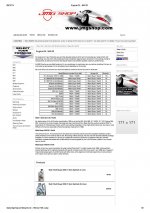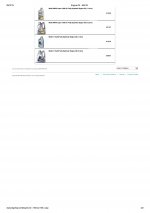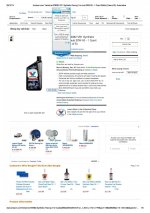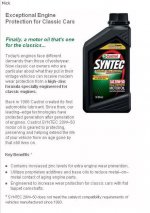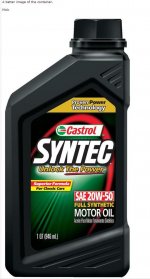RAC68
Darth Vader
Offline
Roger Started a thread discussing the best choice of (2) branded ZDDP additives that started me to think …since I had not previously considered ZDDP in any form, why would I consider it now? Doom has been projected every time a formula change is promoted for the fuels or lubricants that we have depended upon for decades, and yet, we still keep rolling on. This thread was created to solicit inputs to the more basic questions about ZDDP and compliment the more advanced objective of Roger’s thread.
In Roger’s thread, Chris explained that our engines require the higher ZDDP content of earlier oil formulations to resist ware in such metal-on-metal contacts as lifter on cam lobe. However, Bob relayed a TV episode that presented the quick destruction of the cam during the initial startup of a newly rebuilt engine even after a ZDDP additive was added to the oil. Finally, Andrea questioned which would be better for our Healey engines when considering that the ZDDP formulated as an additive is different from that which is incorporated in high ZDDP content oils?
So, what does ZDDP do and is it necessary or is it another promotion for the purpose of generating revenue for the supplier? How will it work on our Healey engines? What form of ZDDP will work best on our LBCs? How would you know if you are getting benefit from this costly product?
Your input is appreciated,
Ray (64BJ8P1)
In Roger’s thread, Chris explained that our engines require the higher ZDDP content of earlier oil formulations to resist ware in such metal-on-metal contacts as lifter on cam lobe. However, Bob relayed a TV episode that presented the quick destruction of the cam during the initial startup of a newly rebuilt engine even after a ZDDP additive was added to the oil. Finally, Andrea questioned which would be better for our Healey engines when considering that the ZDDP formulated as an additive is different from that which is incorporated in high ZDDP content oils?
So, what does ZDDP do and is it necessary or is it another promotion for the purpose of generating revenue for the supplier? How will it work on our Healey engines? What form of ZDDP will work best on our LBCs? How would you know if you are getting benefit from this costly product?
Your input is appreciated,
Ray (64BJ8P1)
Last edited:

 Hi Guest!
Hi Guest!

 smilie in place of the real @
smilie in place of the real @
 Pretty Please - add it to our Events forum(s) and add to the calendar! >>
Pretty Please - add it to our Events forum(s) and add to the calendar! >> 

